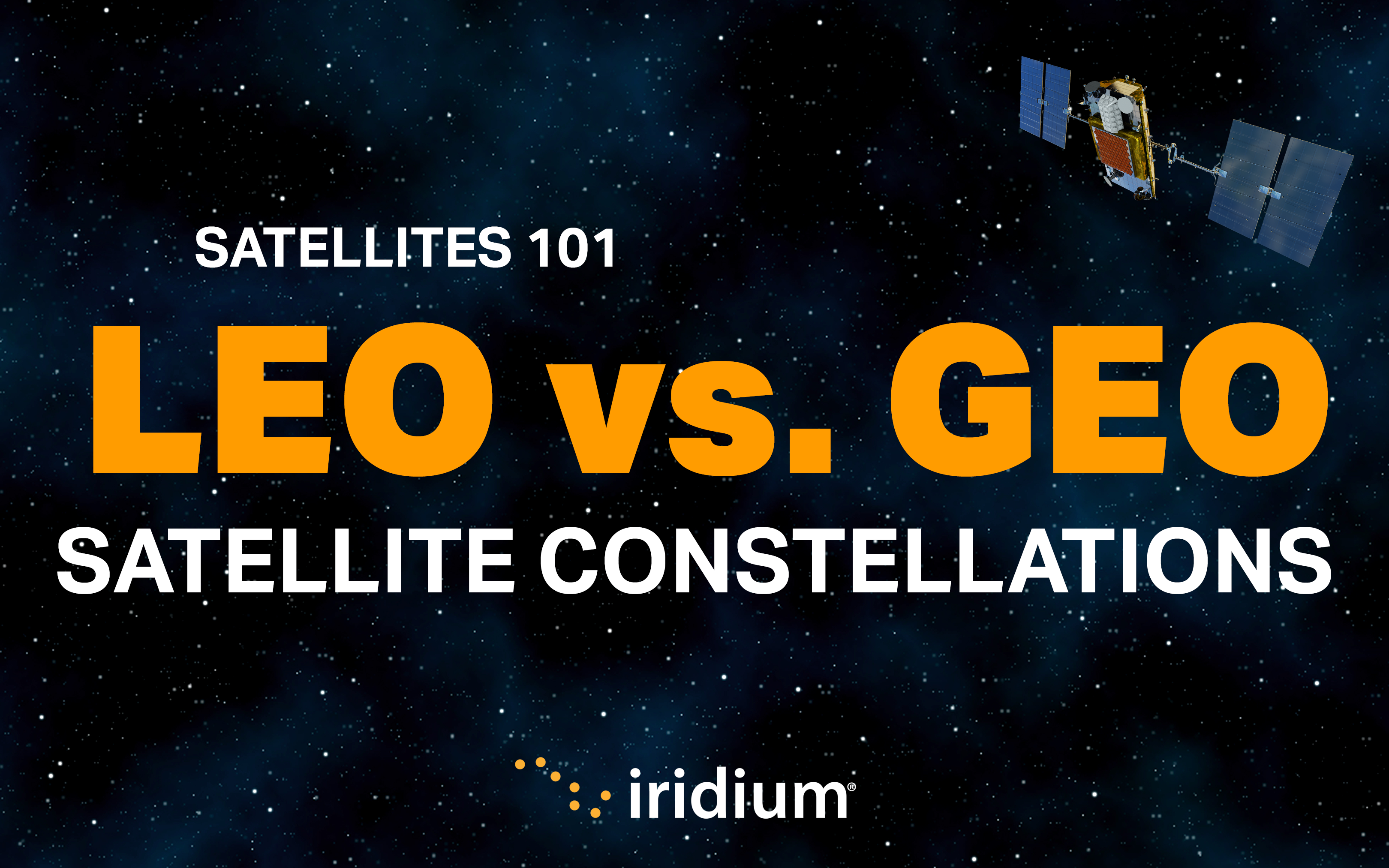Satellites 101: LEO vs. GEO

For decades, people across the government and the private sector have debated whether Low-Earth Orbit (LEO) or Geosynchronous Equatorial Orbit (GEO) satellites are more effective at providing communications. Price, coverage, maintenance, and a variety of other topics are continually discussed around the world as technology continues to advance. This blog will help you understand the different types of constellation architectures and how they work.
Let’s start with Geosynchronous Equatorial Orbit, also known as Geostationary satellites. These satellites are called Geostationary because they appear fixed as they move at the same angular velocity as the Earth and orbit along a path parallel to Earth’s rotation, providing coverage to a specific area. From the ground, GEO satellites appear to be, well, stationary. At about 35,000 kilometers (22,000 miles) above the Earth’s surface, this type of orbit was first used in 1964 for NASA’s Syncom III, an experimental satellite for communications aboard the Delta-D rocket. Unfortunately, due to the curvature of the Earth, a geostationary satellite cannot provide continuous service above or below approximately +/- 70 degrees latitude.
Meanwhile, LEO satellites revolve at an altitude between 160 to 2,000 kilometers (99 to 1,200 miles). A constellation of LEO satellites can provide continuous, global coverage as the satellite moves. Unlike GEO satellites, LEO satellites also fly at a much faster pace because of their proximity to Earth. For example, an Iridium® satellite flies at approximately 17,000 mph (completing an orbit every 100 minutes!), compared to a GEO satellite that typically flies around 7,000 mph.
There are many applications for GEO satellites, including weather forecasting, satellite radio, and television. Because GEO satellites orbit at such a high altitude, however, there is a longer communication time lag (latency) as the signals travel to and from these satellites. For this reason, many critical communications are handled over LEO satellite networks, which allow for faster connectivity without wires or cables.
Although the first LEO satellite was launched in the 1950s, it wasn’t until the 1980s that engineers began to challenge the effectiveness of GEO satellites and their “bent pipe” architecture (that many LEO satellites had adopted too). That’s when the idea for a LEO satellite constellation first occurred. A small group of engineers at Motorola began researching and designing a LEO satellite system that allowed the satellites to communicate with each other through cross-links, making for low-latency communications possible all around the world. This network would eventually become Iridium. This crosslinked architecture provides the additional advantage that communications can be “grounded” near their desired destinations.
Today, many communications, navigations, space mission, and observation satellites are in low-earth orbits. Among these are the International Space Station, which orbits at an altitude of around 350 kilometers (218 miles) and the Iridium network, which includes our constellation of 66 active satellites orbiting at 777 kilometers (431 miles) above Earth.
The Iridium network’s LEO position allows us to serve many markets that struggle to adequately communicate with a GEO system. For example, our LEO constellation enables uninterrupted communication anywhere in the world – even for ships sailing at high latitudes, adventurers in remote regions, or transoceanic planes far from land. Due to the fixed nature of GEO satellites, signal blockages between a user and satellite can easily occur; however, since LEO satellites are always moving, the chances of a long or persistent signal blockage are greatly reduced.
Additionally, LEO networks, like Iridium’s, traditionally are L-band systems, which operate in the lower part of the radio spectrum, around the same frequencies as mobile phones. Meanwhile, higher frequency C, Ku, and Ka band systems are used for satellite TV and VSAT networks. L-band is renowned for its ability to send and receive transmissions even in adverse weather conditions because lower frequencies are less susceptible to interference from atmospheric and weather conditions than their Ku, Ka and C-band counterparts.
The cross-linked LEO architecture of the Iridium network also enables low-latency, resilient voice calling. Regardless of where a user is, anywhere on Earth, from the North Pole to South Pole, the Iridium LEO constellation ensures dependable communications with a quality user experience.
As we near the commercial service introduction of Iridium Certus, we are confident that this service, enabled by our new Iridium NEXT LEO constellation will become the preferred provider of global communications.
Interested in learning more about how the Iridium network uses our LEO constellation across other markets to provide pole-to-pole communications? Click here to learn more from an interview with our chief executive officer, Matt Desch.

